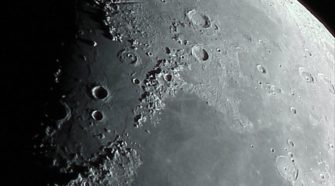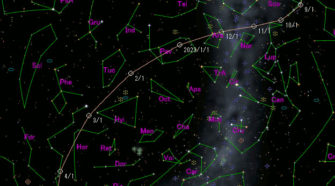This Week in History: June 14-20
JUNE 14, 1770: The renowned French comet hunter Charles Messier discovers a moderately bright comet in Sagittarius. 2½ weeks later this comet passed just 0.015 AU from Earth, the closest confirmed cometary approach to Earth in history. The comet, named after Swedish mathematician Anders Lexell, who computed its orbit, was later perturbed into a much …
Comet of the Week: LINEAR C/2001 A2
Perihelion: 2001 May 24.52, q = 0.779 AU At the beginning of the 21st Century the discovery of comets and near-Earth asteroids was dominated by the first of the comprehensive sky surveys, the LIncoln Near-Earth Asteroid Research (LINEAR) program run by MIT’s Lincoln Laboratory and based at White Sands Missile Range in New Mexico, that …
Special Topic: Lunar and Planetary Impacts
Ever since the Italian astronomer Galileo Galilei turned his primitive telescope towards the moon on November 30, 1609 and saw them for the first time, we’ve known that the moon is covered with craters. These come in all sizes, from very large ones several hundred km across down to meter-size and smaller. For a long …
This Week in History: June 7-13
JUNE 7, 2013: A team led by Dutch astronomer Nienke van der Marel announces their discovery of a planet-forming – and comet-forming – disk of material surrounding the young star Oph-IRS 48 in the constellation Ophiuchus, using data obtained with the Atacama Large Millimeter/submillimeter Array (ALMA) telescope in Chile. An ALMA image of this disk …
Comet of the Week: PANSTARRS C/2017 K2
Perihelion: 2022 December 19.67, q = 1.797 AU I’ve hinted in some of the earlier presentations of “Ice and Stone 2020” that, for the past few years, we have been in a slow period when it comes to bright comets. Indeed, for “Great Comets” – discussed in a previous “Special Topics” presentation – the most …
Special Topic: “Small Bodies” in Culture and Literature
Although they may not be as big a presence in our overall human culture and literature as the moon and the other planets of our solar system are, the “small bodies” of our solar system are nevertheless present. There a number of misperceptions about them, perhaps more so than there are for the planets. Consider, …






